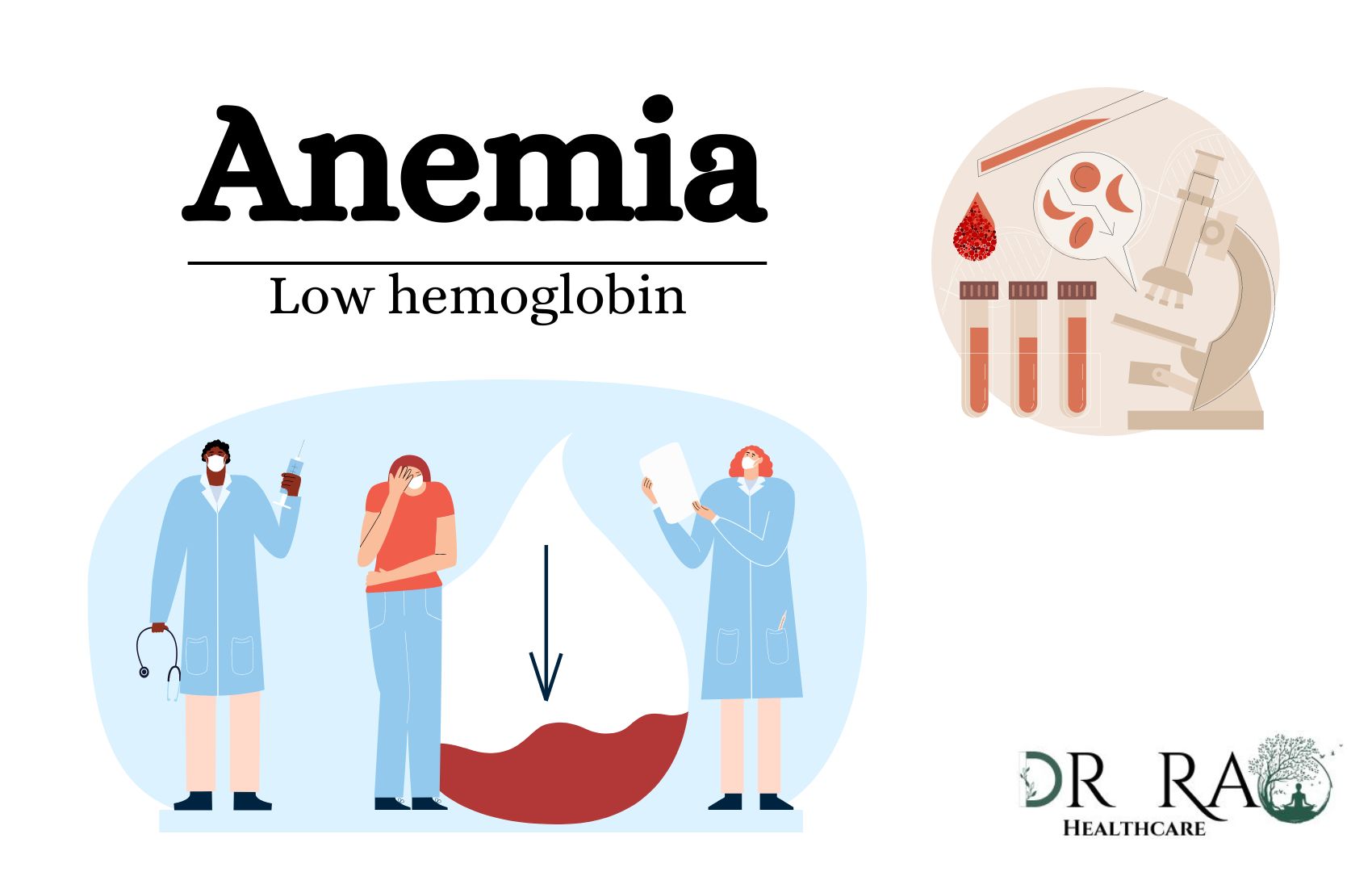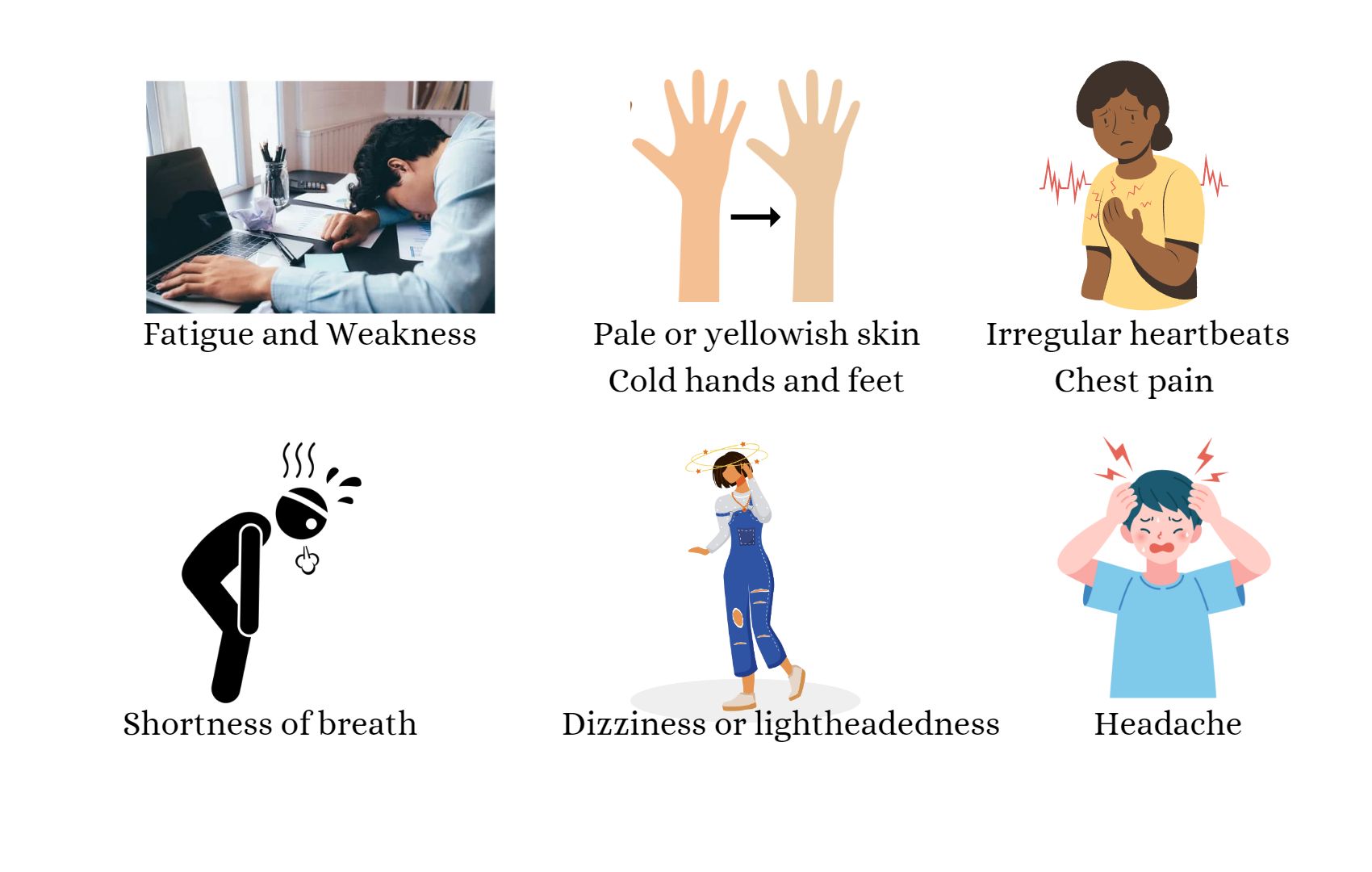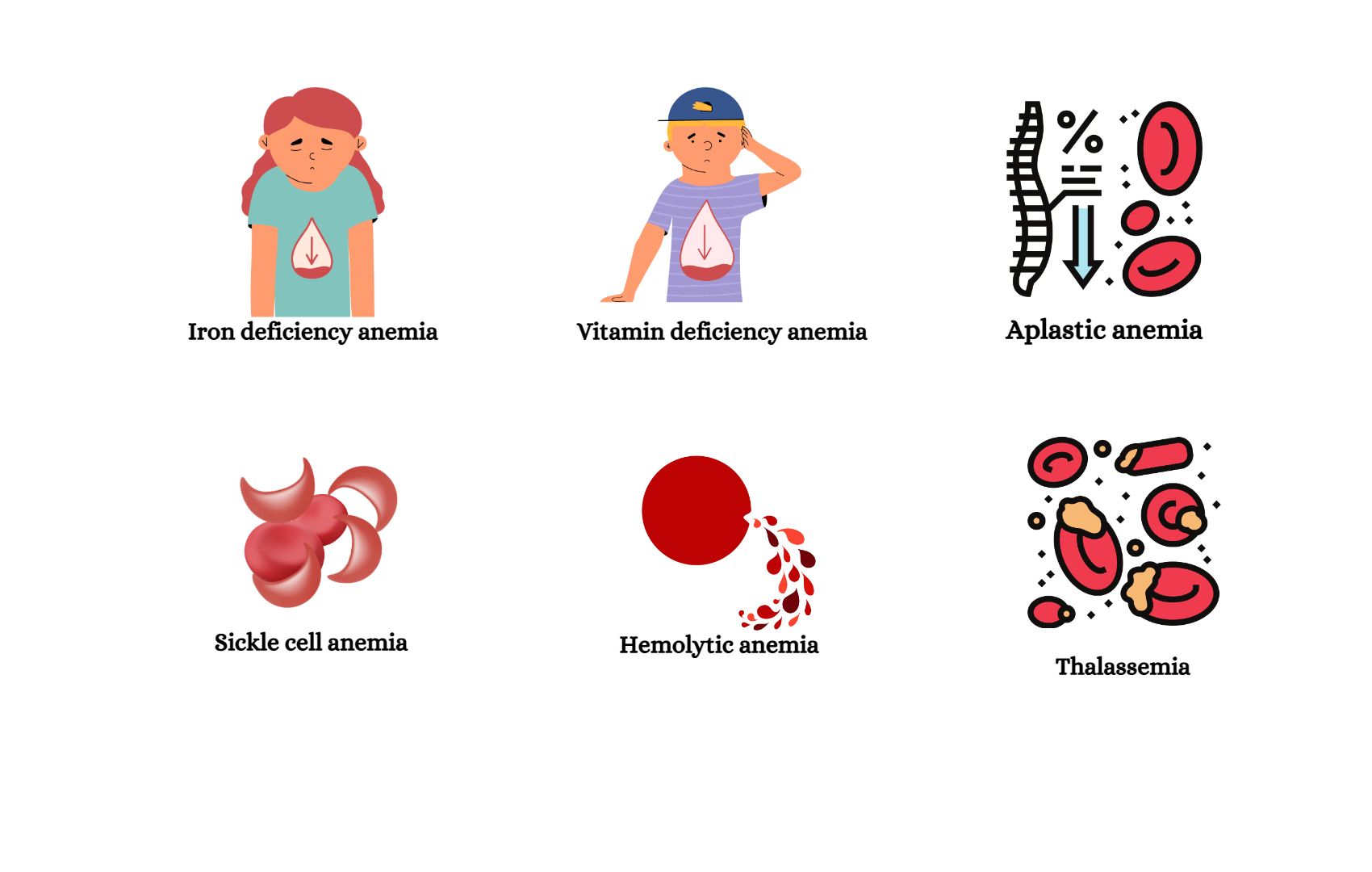
Healthy Living
Anemia
Low hemoglobin
Anemia refers to the reduced total number of circulation healthy red blood cells (RBC) below the normal level. These normal level may vary accoding to age, gender and living habbitat.
Reduced RBC leads in reduction in oxygen carring capacity of the blood. One suffuring from anmeia has low level of hemoglobin.
Symptoms
Intitally anemia is asymptomatic but as the anemia advances and is left untreated there are some set of symptoms shown. All most all of the symptoms of anemia is becuse of lack of oxygen supply to organs due to reduced oxygen carring capacity of RBC. Person suffering from anemia will show following symptoms:

Following are common symptoms of anemia-
-
Fatigue (First one to appear)
-
Weakness
-
Shortness of breath (On exertion)
-
Pale or yellowish skin
-
Irregular heartbeat
-
Dizziness or lightheadedness (On standing up or active )
-
Chest pain
-
Cold hands and feet
-
Headaches
Other symptoms of anemia which are not coomonly seen are-
-
Onychoschizia- Brittle nails
-
Angular stomatits – Inflammation and crack at the side of mouth
-
Glositis- Inflammation of tongue
-
Jaundice
-
Lymph node enlargement
-
Trouble to concentrate
-
Caving to eat pan, clay, ice chips, areca nut, dirt, areca nut, etc
Causes
Causes
Red blood cells are produced by cells in bone marrow. These matured red blood cells are then released into blood, after span of 120 days the are then destroyed in spleen.
On average, our bone marrow produces 2 million red blood cells each second and simultaneously same number are removed from circulation. So we can say that production and destruction of RBC is alway in equillibrium.
About 1% of your red blood cells are removed from circulation and replaced each day.
Anemia occurs when enough red blood cell are not there in blood. Any disturbance in this equllibrim leads to anemia. Now this can be present since birth ie congenital or may be developed in later part of life ie aquired.
Talking about the causes of anemia; there can be many causes but roughly speaking they can be diveded into 3 catagories-
-
Production fault ie our body doesn’t produce enough red blood cells.
-
Destruction fault ie over or early destruction if red blood cell in body
-
Bleeding ie our body is lossing red blood cells more quickly than they can be replaced
Factors which decrease production of RBC-
-
Insufficient dietary intake of micro and macro nutrient for production of RBC such as iron, vitamin B12 or folic acid
-
Thyroid problem like hypothyriodism
-
Immunosuppresent conditions, HIV, TB, etc.
-
Chronic kidney diseases
-
Aplastic anemia
-
Ulcerative colitis and cronh’s disease
-
Lupus or rheumatiod arthritis
-
Chemotherapy, radiation therapy or chemo adjuvant therapy
Factors the increases the destruction of RBC-
-
Certain infections such as Malaria, Babesia, and Bartonella bacilliformis (B. bacilliformis)
-
Autoimmune activity
-
Liver disease ie liver cihrrosis
-
Drug side effects such as Cephalosporins (a class of antibiotics), most common cause, dapsone, levodopa, levofloxacin, etc.
-
Splenomegaly also know as enlarged spleen
Factor causing blood loss leading to anmeia-
These factors can be divided into I) Long term II) Short term
I) Long term-
-
Heavy mentrual bleeding
-
Endometriosis, Adenomyosis
-
Active bleeding ulcer in gut
-
Hemorrhoids (Bleeding)
II) Short term
-
Accidents or injuries
-
Surgery
-
Childbirth
-
Heavy Nosebleed
Type
Now let’s move towards types of anemia, they are as follows-
-
Iron deficiency anemia
-
Vitamin deficiency anemia
-
Aplastic anemia
-
Sickle cell anemia
-
Haemolytic anemia
-
Thalassemia

Iron deficiency anemia
The Anemia caused due to iron deficiency is called as Iron deficiency anemia. A lack of iron in your body is the main cause of this type of anemia. Most common anemia accounting upto 50% of total casuses. To produce hemoglobin, our bone marrow needs iron. And our body can’t make enough hemoglobin for red blood cells without enough iron.
Many pregnant women develop this type of anemia without iron supplements. It can also be brought on by blood loss from heavy monthly flow, stomach or small intestine ulcers, large bowel cancer, and regular use of various over-the-counter painkillers, particularly aspirin, which can irritate the stomach lining and lead to blood loss. To stop anemia from returning, it’s critical to identify the cause of iron deficiency.
Vitamin deficiency anemia
The anemia caused due to vitamin insufficiency is called as vitamin B12 deficiency anemia. To make enough healthy red blood cells, your body also requires folic acid and vitamin B-12 in addition to iron. Reduced formation of red blood cells can result from a diet deficient in these and other essential nutrients. Some individuals who have enough B-12 cannot absorb the vitamin. Pernicious anemia, commonly known as vitamin anaemia, may result from this.
Aplastic Anemia
This uncommon, potentially fatal anaemia develops when your body fails to create enough red blood cells. Aplastic anaemia can be brought on by infections, some medications, autoimmune disorders, and exposure to hazardous substances.
Sickle cell anemia
Anemia with sickle shaped red blood cells. It is a type hemolytic anaemia which is an inherited and occasionally serious illness. Red blood cells are forced to take on an unusual crescent (sickle) shape as a result of a faulty form of haemoglobin. There is a persistent deficit of red blood cells as a result of these abnormal blood cells dying too soon.
Hemolytic anemia
Anemias which is asosicated with hemolysis of red blood cell. When red blood cells are destroyed more quickly than bone marrow can produce new ones, this type of anaemias ouccres. Red blood cell breakdown is accelerated by some blood conditions. Hemolytic anaemia can be inherited or acquired later in life.
Thalassemia
a blood condition where an oxygen-carrying protein is present in lower than usual concentrations.
An genetic blood illness called thalassemia is characterized by abnormally low levels of the oxygen-carrying protein hemoglobin and red blood cells.
Fatigue, weakness, pallor, and delayed growth are symptoms.
Treatment may not be required for mild types. A donor stem cell transplant or blood transfusions may be necessary for severe types.
Daily Requirement
Numerous types of anemia cannot be prevented. Yet, by consuming a diet rich in a variety of vitamins and minerals, you can prevent iron deficiency anemia and vitamin deficiency anemias.
Age and sex determine daily requirements for vitamins and iron.
Due to iron loss during menstrual cycles and fetal development during pregnancy, women require more iron and folate than men do.
Iron
Following are the recommended daily iron requirement for adults aged 19 to 50:
For men 8 mg
For women 18 mg
During pregnancy 27 mg
While breastfeeding 9 mg
Just 8 mg of iron are needed daily for people over 50. If enough iron levels cannot be obtained through diet alone, a supplement may be required.
Iron-rich foods include red meat and other meats, beans, lentils, iron-fortified cereals, dark green leafy vegetables and dried fruit.
Vitamin B12
Following are the recommended daily iron requirement for adults aged 19 to 50:
For men 8 mg
For women 18 mg
During pregnancy 27 mg
While breastfeeding 9 mg
Just 8 mg of iron are needed daily for people over 50. If enough iron levels cannot be obtained through diet alone, a supplement may be required
Iron
Following are the recommended daily iron requirement for adults aged 19 to 50:
For men 8 mg
For women 18 mg
During pregnancy 27 mg
While breastfeeding 9 mg
Just 8 mg of iron are needed daily for people over 50. If enough iron levels cannot be obtained through diet alone, a supplement may be required
